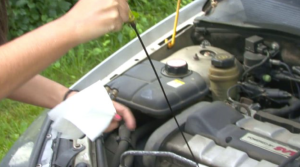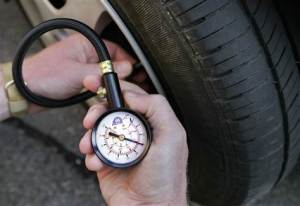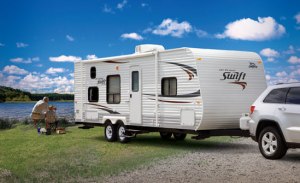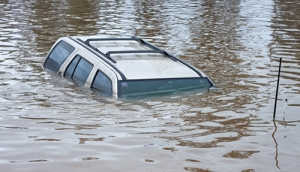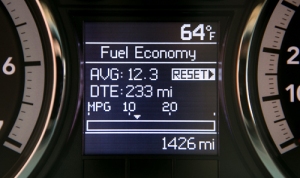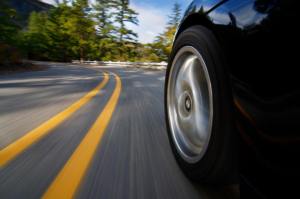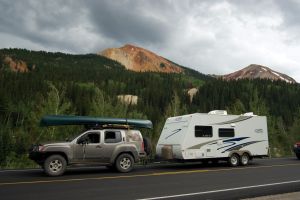 Over 15,000 people have been killed in crashes involving passenger vehicles towing trailers since 19751 with more than 65,000 crashes involving passenger vehicles towing trailers occurring in one year alone.2 Lack of knowledge of correct towing techniques is clearly a contributing factor – in fact, a recent study2 revealed that 71% of Americans who tow admitted to being only somewhat to not knowledgeable about proper towing practices and safety! So, as the spring/summer road trip and tow season approaches, we found these Top Ten Towing Tips from AutoMD.com to make sure that vacation road trippers not only tow their recreational ‘toys’ safely, but also avoid extra wear and tear on their towing vehicle.
Over 15,000 people have been killed in crashes involving passenger vehicles towing trailers since 19751 with more than 65,000 crashes involving passenger vehicles towing trailers occurring in one year alone.2 Lack of knowledge of correct towing techniques is clearly a contributing factor – in fact, a recent study2 revealed that 71% of Americans who tow admitted to being only somewhat to not knowledgeable about proper towing practices and safety! So, as the spring/summer road trip and tow season approaches, we found these Top Ten Towing Tips from AutoMD.com to make sure that vacation road trippers not only tow their recreational ‘toys’ safely, but also avoid extra wear and tear on their towing vehicle.
“Driving may still be the best travel choice for families this spring and summer, but for those who will be hauling their fun behind them, it is important to remember that without careful planning, attention to equipment and safe driving practices, these extra loads can be a hazard to driver, passengers and vehicle – and to other drivers as well,” said Brian Hafer, VP Marketing at AutoMD.com.
There are many things to consider when towing extra cargo. AutoMD.com’s Top Ten Towing Tips provide crucial advice for the novice tower, as well as a refresher for those who are more experienced with hauling an extra load.
Top 10 Towing Tips
The information and advice provided herein is general and intended to be a starting point to gather information about towing practices. You should not rely solely on the information contained herein as it may not be suitable for your particular automobile or situation. Please consult your vehicle and trailer owner’s manual before attempting to tow anything.
1. Understanding Towing Capacity
Never exceed your vehicle’s towing capacity. For example, you may think that just because you have a truck, you can tow a boat, but if the boat and trailer are heavier than your towing capacity, you can find yourself in deep water (literally!). If your tow load exceeds your car or truck’s capacity, it can lead to significant mechanical issues and/or transmission damage. Plus, it can cause sway issues, which can have a devastating impact on others on the road. To find out what your car/truck’s towing capacity is, consult your vehicle owner’s manual. There are also public and private scale locations that can help you determine the weight of your trailer and cargo.
2. Let’s Get Hitched
A tow hitch attaches to the chassis of a car allowing it to connect to and tow a trailer or other vehicle. Buying the right hitch is crucial if your vehicle is not already equipped with a manufacturer’s towing package. Your hitch must not only match your vehicle’s towing capacity but must be the appropriate hitch for the load you are carrying: for instance, a weight-distributing hitch is appropriate for towing a heavier load (especially when the trailer and load weigh more than 50 percent of the vehicle’s weight), and it can help reduce sway.
3. Are All Brakes in Sync?
Make sure that the brakes and lights on your car or truck are in sync with the brakes and lights on your trailer. Your trailer brakes and brake lights should go on when your car/truck’s brakes and brake lights go on. If your car/truck signals left, so should your trailer. Not only is this basic road safety, but having operable, in sync lights when towing is the law in many states. And many states require that a towed trailer weighing more than 1,500 pounds has its own brake system.
4. Weight Distribution is Critical
As you prepare to tow a trailer, make sure your load is distributed appropriately for weight. Incorrect weight distribution can cause your trailer to flip with devastating consequences for you and others on the road. Load heavier cargo first, making sure you secure your item(s) with ropes or cords. Fill in extra spaces evenly, front to back, and side to side. By placing sixty percent of the cargo weight on the front half of the trailer, this helps properly distribute weight across the tow hitch and trailer. Take into account visibility: don’t pile things so high that you obstruct the driver’s view unless you have extended side-view mirrors. Always check to be sure you have unobstructed views before hitting the road.
5. Perform a Maintenance Check on Your Vehicle
As with any road trip, make sure your car is in good condition before you head out. Towing can add extra stress to your vehicle, accelerating repair issues for vehicles that are not properly maintained. Check all fluid levels, get an oil change if needed, inspect the brakes, and make sure your tires have plenty of tread and are properly inflated. The more you can do to make sure your car is operating properly, the less likely you are to find yourself, and your trailer, on the side of the road.
6. Do a Practice Run
As they say, practice makes perfect. This is especially important if you are towing a trailer for the first time. Driving when hauling is a completely different experience, so practice accelerating and stopping, backing up, turning corners, and even parking before heading off on your road trip. If you can, practice in a large empty parking lot.
7. Safety Checks
It is a good idea to plan stops every 50-60 miles to check on your trailer and make sure the lights and brakes are working, the tires are inflated, and the load is secure. Sometimes loads can shift if they are not properly tied down. Also, under no circumstances should any passengers be riding in the trailer, even if it is a mobile home.
8. Slow Down!
Drive slower and give yourself ample distance for stopping when towing a trailer. If you are driving too fast, and need to stop suddenly, you can cause your vehicle and trailer to slide, skid, jackknife, or even flip over. Plus, driving slowly (while towing) can help alleviate stress on your vehicle.
9. Towing Laws Vary from State to State
As you embark on your road trip, you may be crossing one, or multiple, states. You may find yourself subject to different towing laws from one state to another. For instance, towing height and width laws vary by state, as do speed limits and weight limits. Some states allow you to haul multiple trailers, while others don’t. Do your research, look online and read up on towing laws for the states where you will be traveling.
10. Carry Emergency Equipment
This is a great rule of thumb for any road trip – carry an emergency kit in case you breakdown or find yourself on the side of the road with a flat tire. Make sure your kit is well stocked with roadside flares and triangles, tire jack, jumper cables, even extra clothes, water and energy bars/ snacks. You may be driving in remote areas, so make sure to carry a cell phone, and that it is adequately charged during your drive.
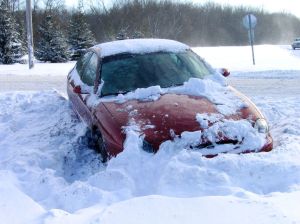 Want a few foolproof ways to get your car out when it’s stuck in the snow? We’ve pulled together our 7 best tips for getting—and staying—unstuck!
Want a few foolproof ways to get your car out when it’s stuck in the snow? We’ve pulled together our 7 best tips for getting—and staying—unstuck!

